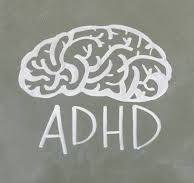Attention Deficit Hyperactivity Disorder (ADHD) is commonly associated with childhood, but it is a condition that can persist into adulthood and even later in life. Understanding how ADHD changes with age is crucial for managing the condition effectively throughout the lifespan. While the core symptoms of ADHD—impulsivity, hyperactivity, and inattention—remain consistent, their presentation and impact can evolve as individuals age. Here’s a closer look at how ADHD manifests at different stages of life and the implications for diagnosis and management.
ADHD in Children
1. Symptoms and Diagnosis
In children, ADHD is characterized by noticeable symptoms of hyperactivity, impulsivity, and inattention. These symptoms can interfere with academic performance, social interactions, and family life. Diagnosis typically involves a comprehensive evaluation, including behavioral assessments and input from parents and teachers.
2. Developmental Changes
As children with ADHD grow, their symptoms may change. For example, hyperactivity may decrease with age, while difficulties with attention and organization can become more pronounced. This evolution is part of the natural progression of the disorder and can affect how ADHD is managed over time.
ADHD in Adolescents
1. Increased Complexity
During adolescence, ADHD symptoms can become more complex. Hyperactivity may give way to restlessness or a sense of inner agitation. Inattention and impulsivity can manifest in academic challenges, difficulty with executive functioning, and social relationships. Adolescents may struggle with time management, organization, and maintaining focus, which can impact their academic performance and social life.
2. Co-occurring Issues
ADHD in adolescents often coexists with other conditions such as anxiety, depression, or learning disabilities. These comorbidities can complicate the presentation of ADHD and make diagnosis and treatment more challenging. It is crucial to address both ADHD and any co-occurring conditions to ensure comprehensive care.
ADHD in Adults
1. Persistent Symptoms
Many individuals with ADHD continue to experience symptoms into adulthood. However, the manifestation of these symptoms may differ from those seen in children. Adults with ADHD often report difficulties with organization, time management, and maintaining focus in work and personal life. Impulsivity may also persist, leading to challenges in decision-making and interpersonal relationships.
2. Impact on Daily Life
For adults, ADHD can impact various aspects of life, including career performance, financial management, and personal relationships. The condition can lead to job instability, difficulties in maintaining personal and professional relationships, and challenges in managing daily responsibilities. Adults with ADHD may also face issues with low self-esteem and chronic stress.
3. Diagnosis and Treatment
adhd get worse with age sometimes be underdiagnosed or misdiagnosed because its symptoms can overlap with other conditions, such as mood disorders or anxiety. A thorough evaluation is necessary to differentiate ADHD from other potential issues. Treatment often involves a combination of medication, psychotherapy, and lifestyle changes. Medications commonly used include stimulants and non-stimulants, while therapy may focus on developing coping strategies and improving organizational skills.
ADHD in Older Adults
1. Age-Related Changes
As individuals with ADHD age, the condition may continue to impact daily functioning, although the presentation can change. For example, hyperactivity often decreases, but difficulties with concentration and executive functioning may persist or become more noticeable. Older adults with ADHD may experience challenges related to cognitive decline and memory issues, which can complicate the management of ADHD symptoms.
2. Interaction with Aging-Related Conditions
ADHD in older adults can interact with age-related conditions such as cognitive decline, dementia, or other health issues. It is important to distinguish between ADHD symptoms and those of age-related cognitive changes to ensure appropriate treatment. Additionally, managing ADHD in the context of other medical conditions requires careful coordination of care.
3. Support and Adaptation
Older adults with ADHD may benefit from support in managing daily tasks, organizing their lives, and maintaining social connections. Adaptations in treatment and lifestyle strategies can help address challenges related to aging and ADHD. This may include cognitive behavioral therapy, occupational therapy, and strategies for improving executive function and memory.
Conclusion
ADHD is a condition that can persist throughout life, and its presentation changes as individuals age. In children, the symptoms may evolve from hyperactivity to more pronounced issues with attention and organization. Adolescents may face increased complexity due to co-occurring conditions. In adulthood, ADHD can impact career and personal life, and in older age, it may interact with age-related cognitive changes. Understanding these changes is crucial for providing effective diagnosis and treatment throughout the lifespan. Tailoring interventions to the specific needs of each age group can help manage ADHD symptoms and improve overall quality of life.


